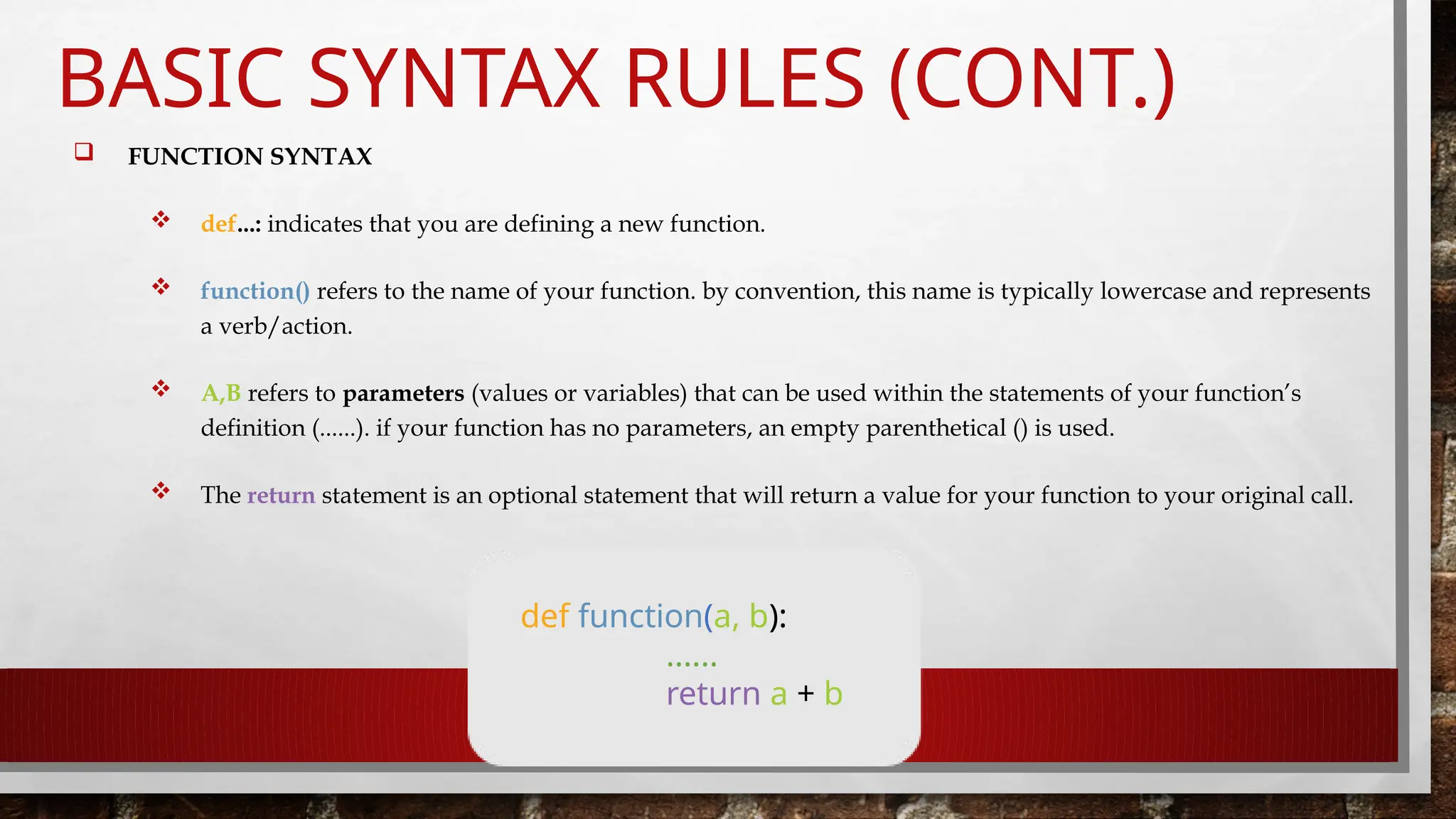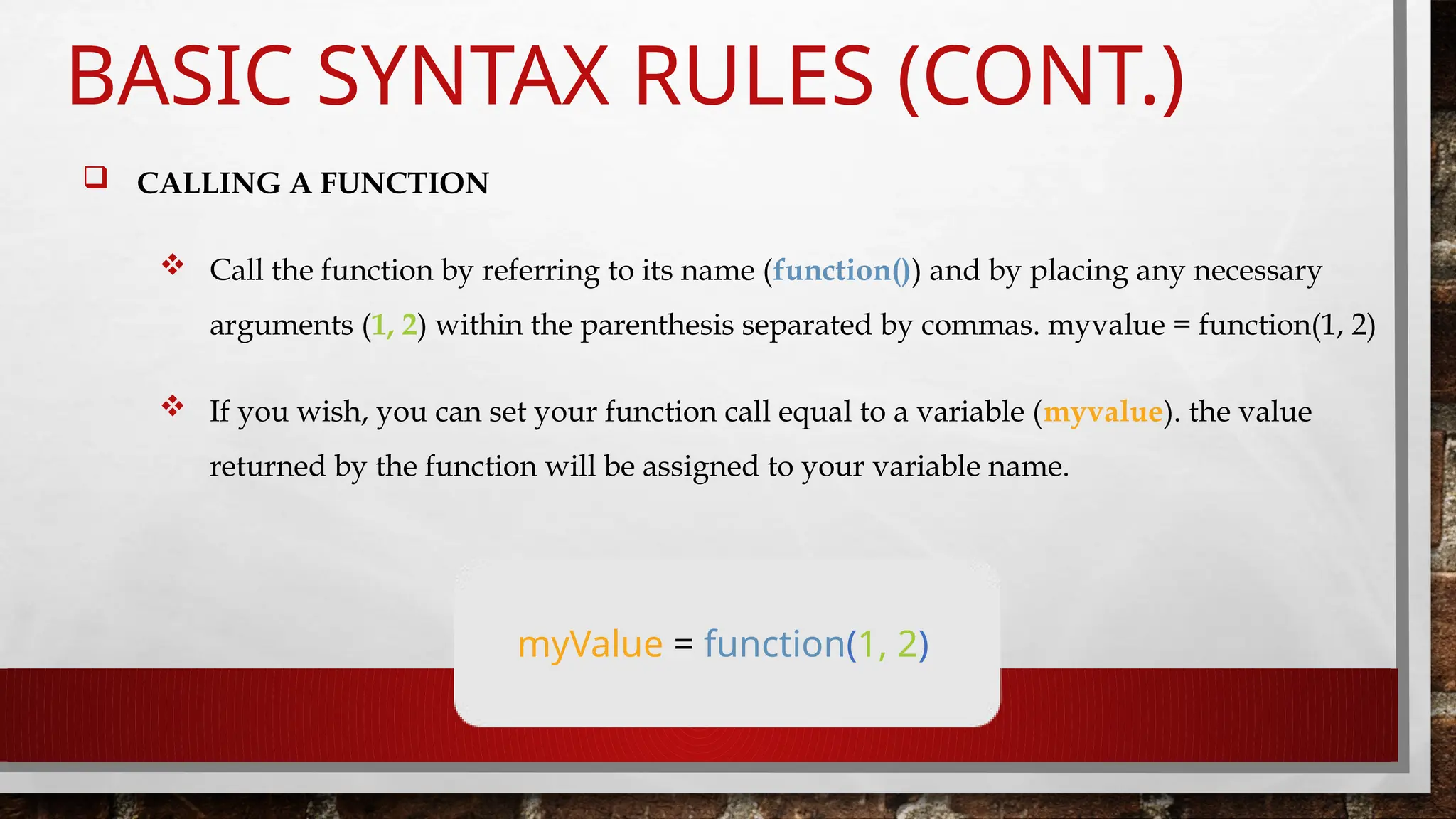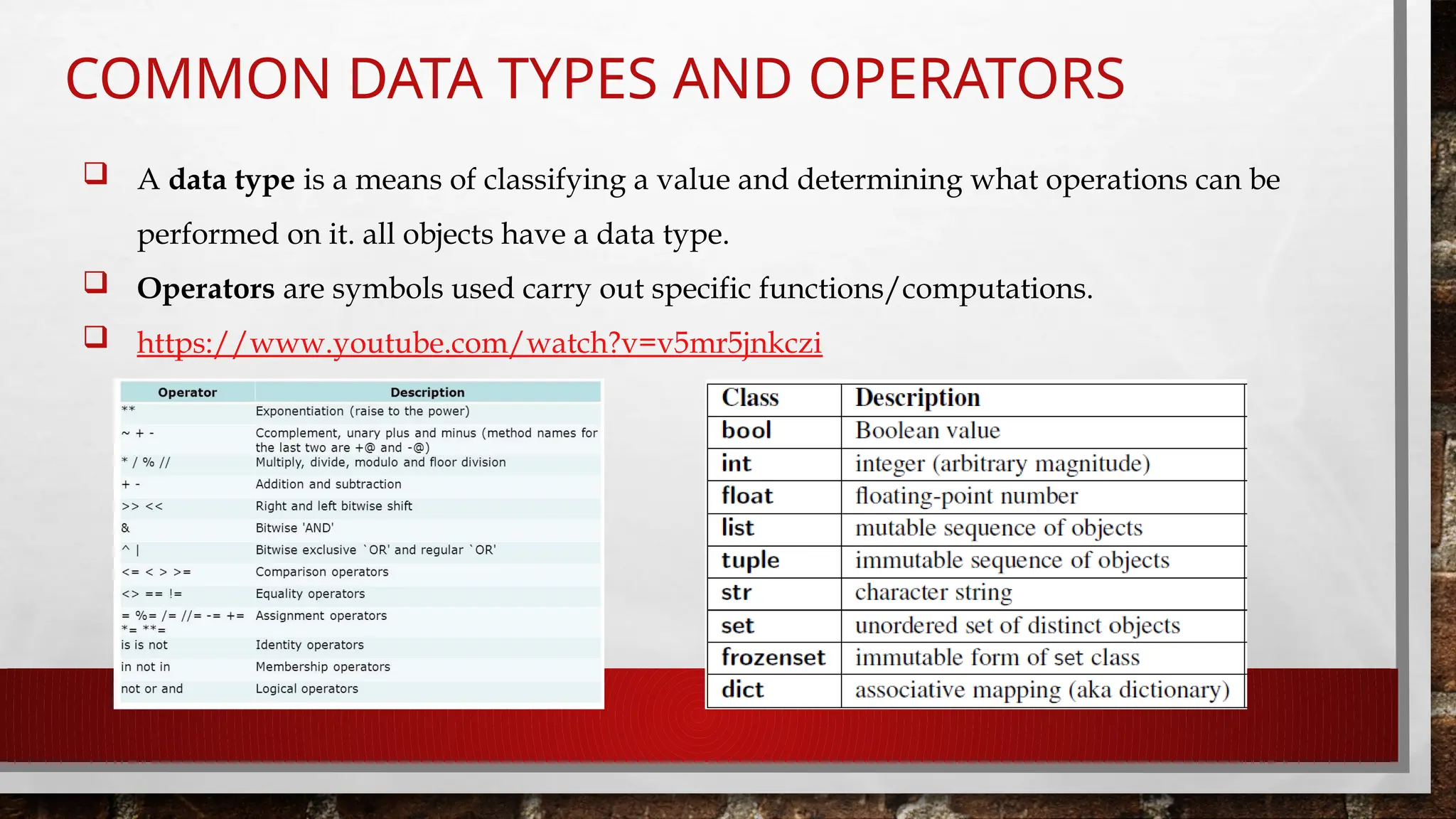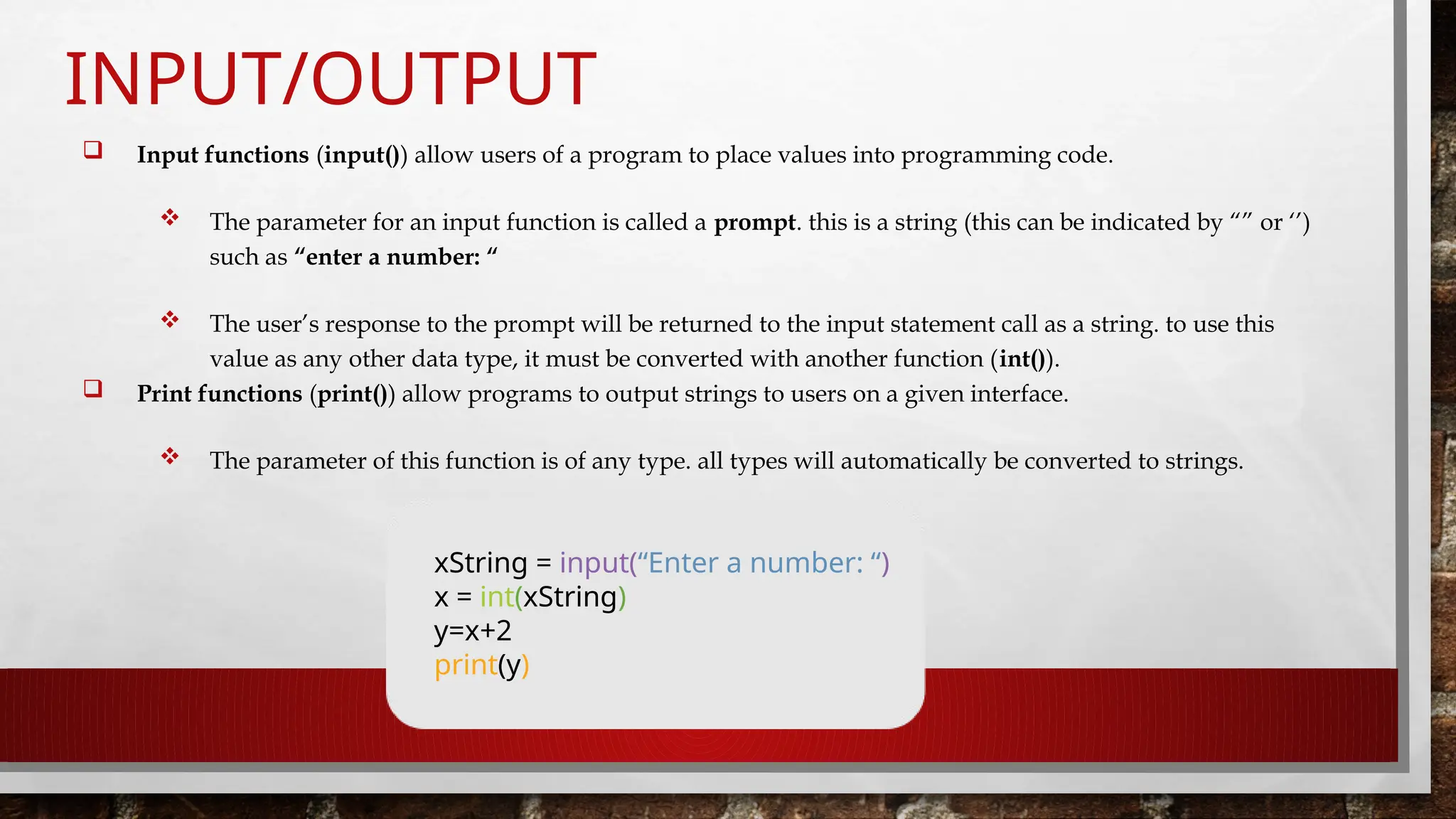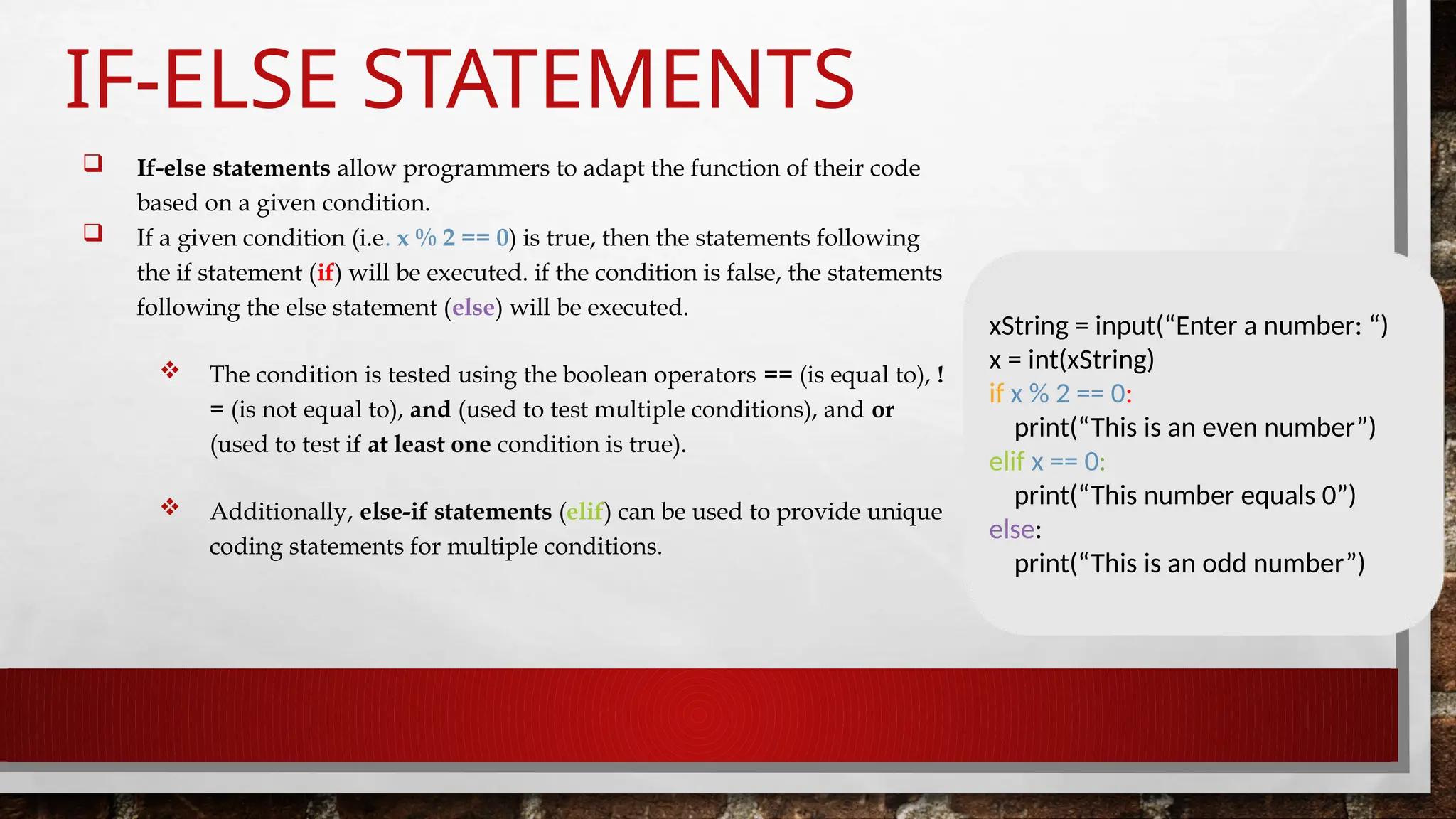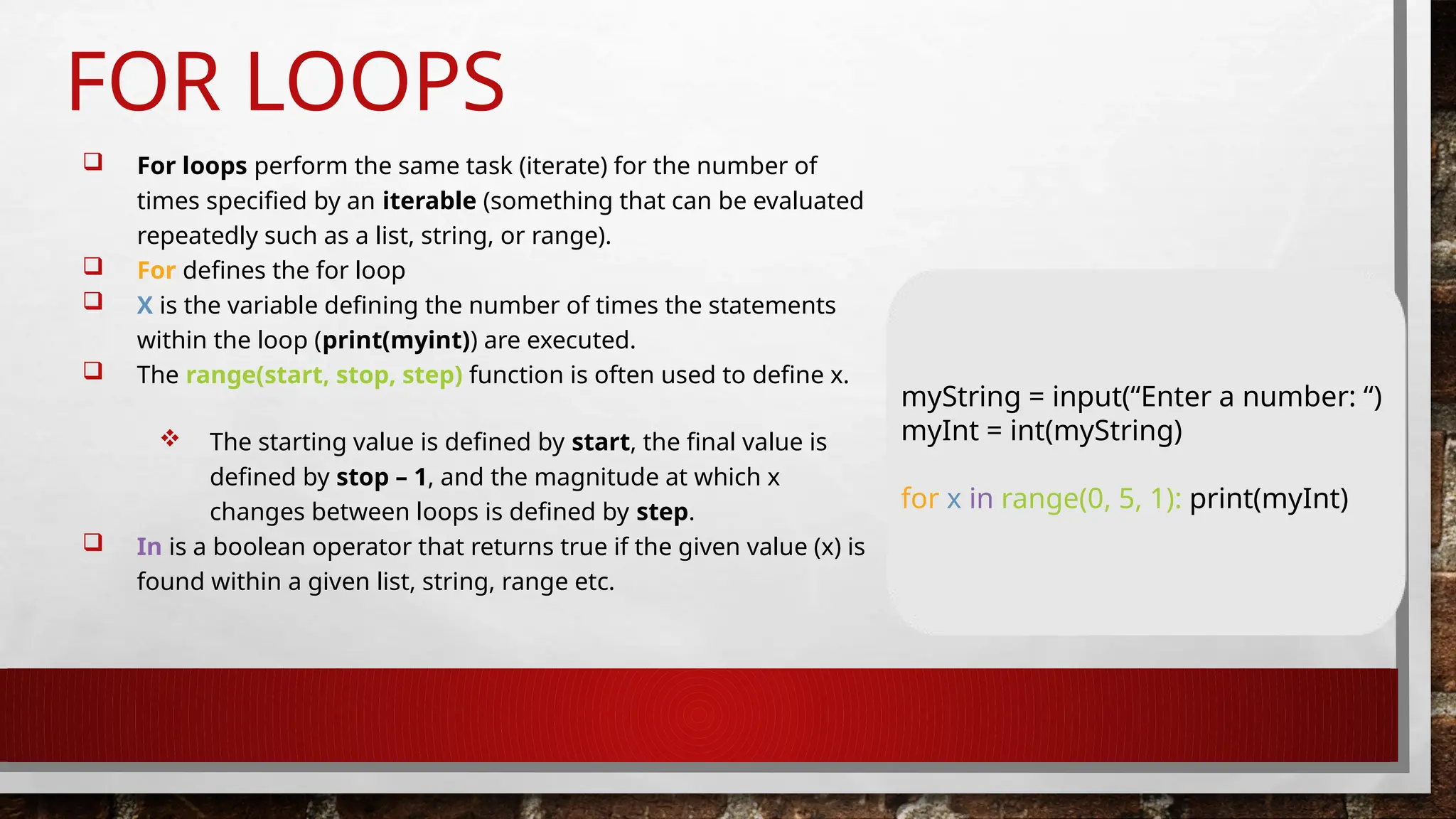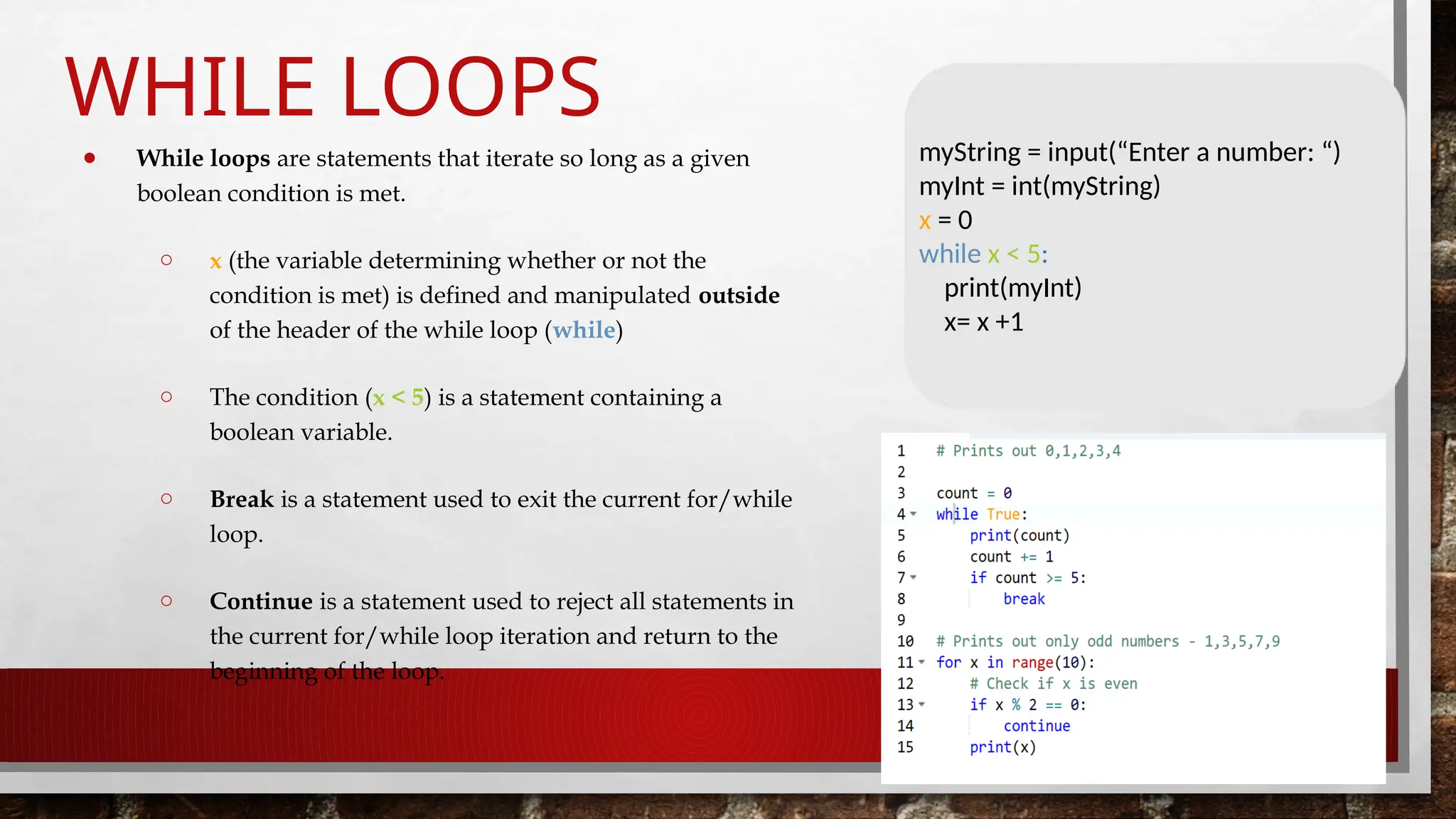The document provides an overview of Python programming, highlighting its features such as simplicity, versatility, and usage in various applications. It covers fundamental concepts including variables, data types, functions, control structures like if-else statements and loops, and syntax rules. Additionally, it explains how to handle input/output operations and the importance of data types and operators in programming.
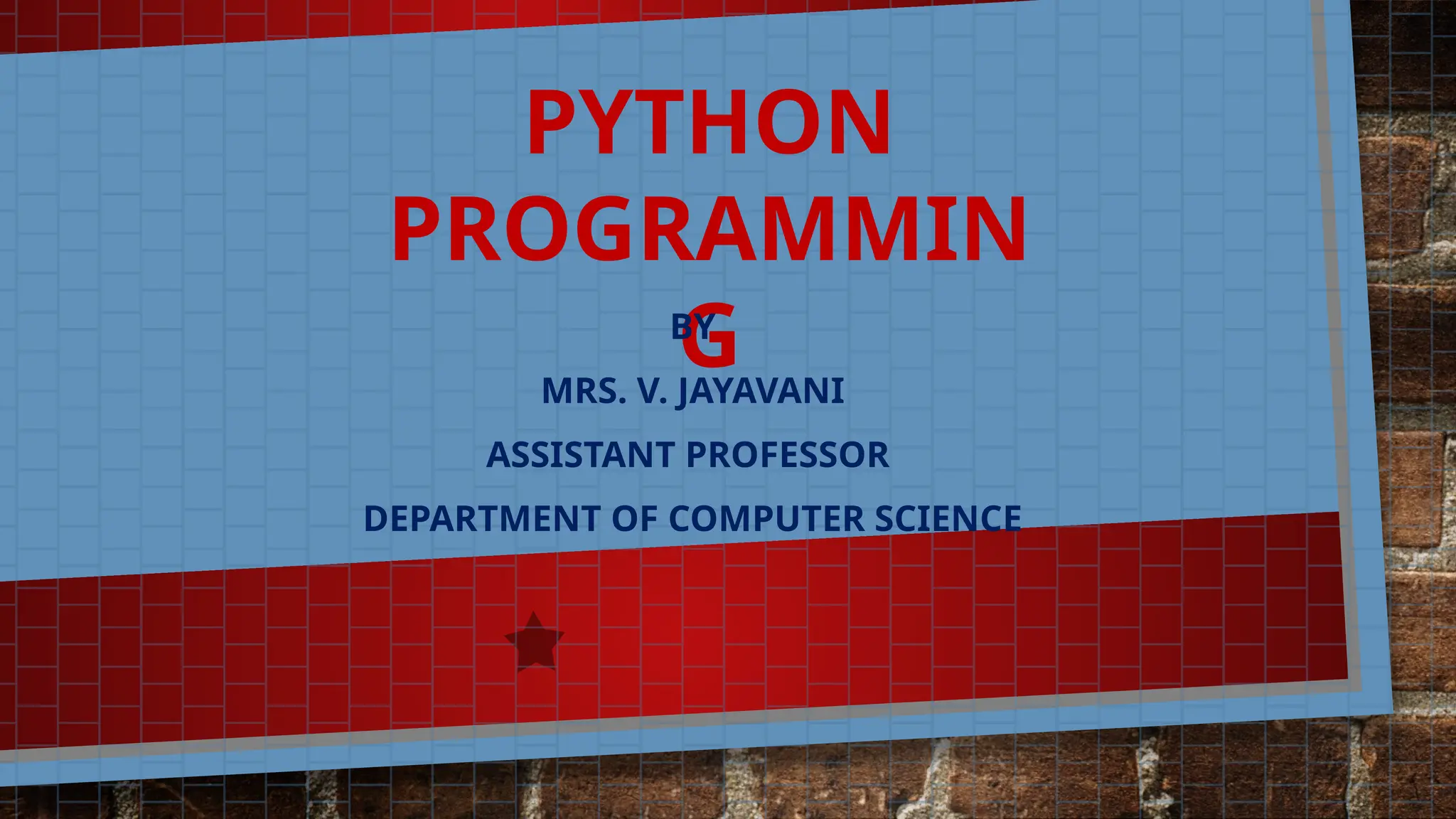
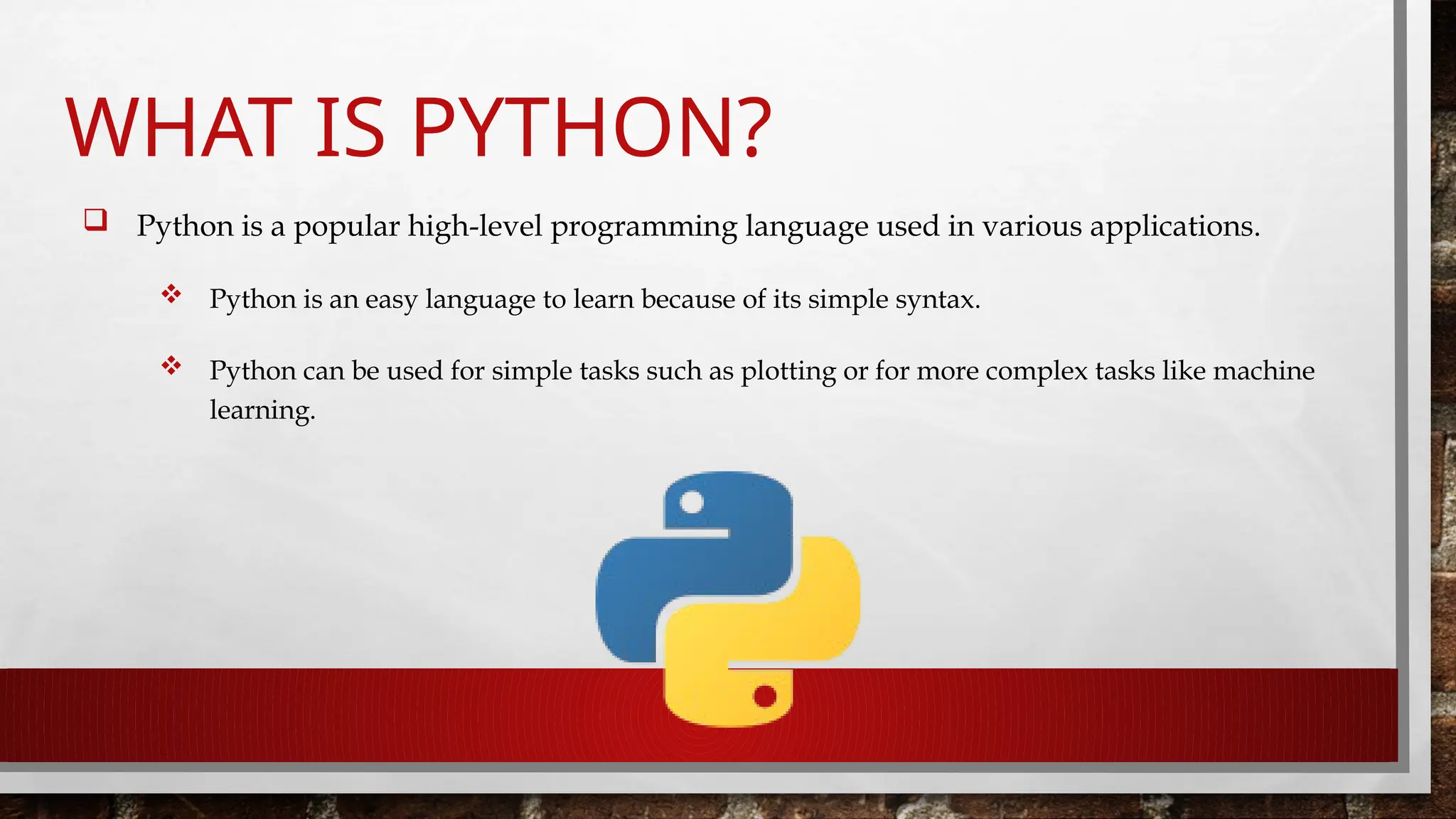
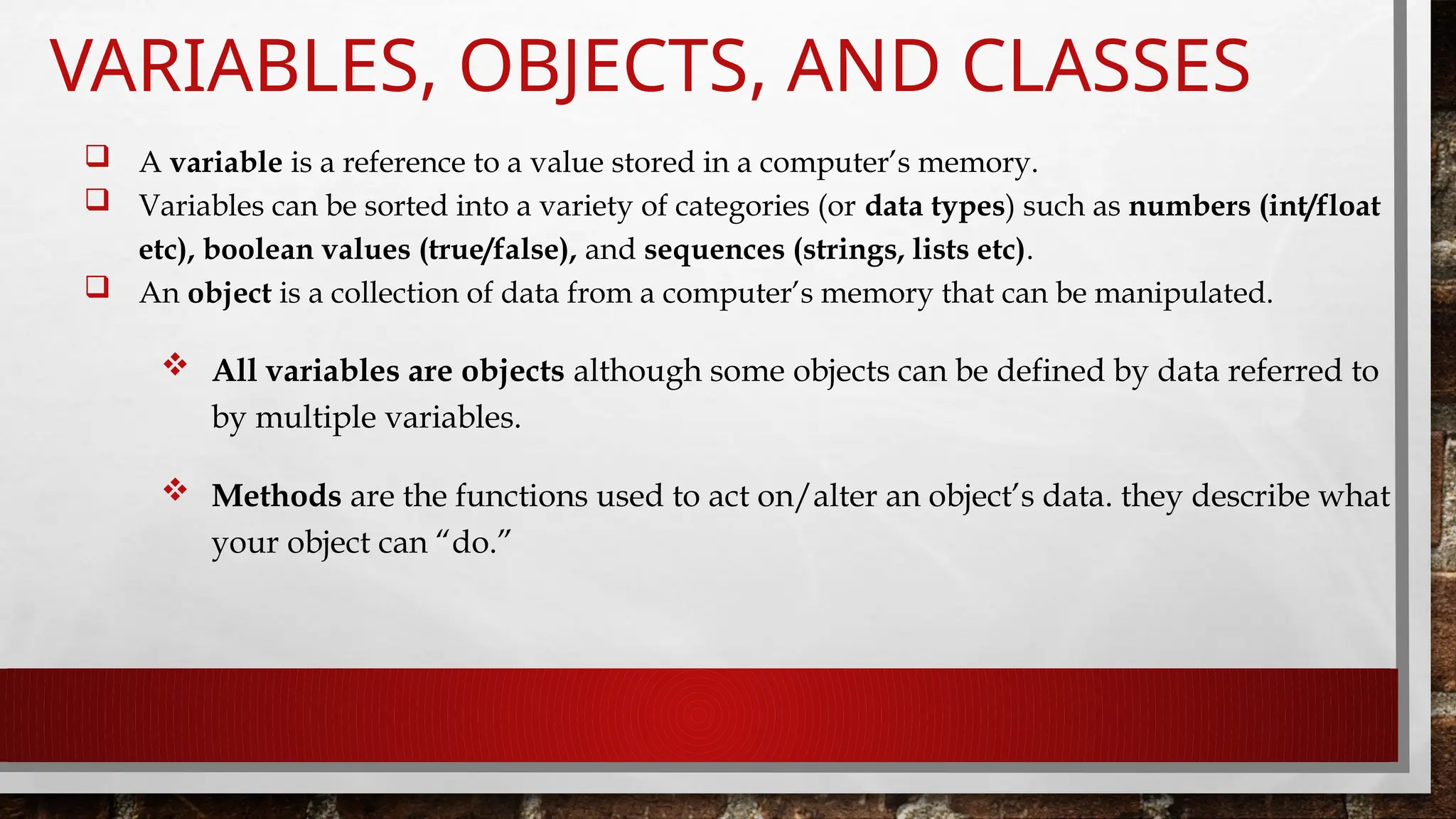
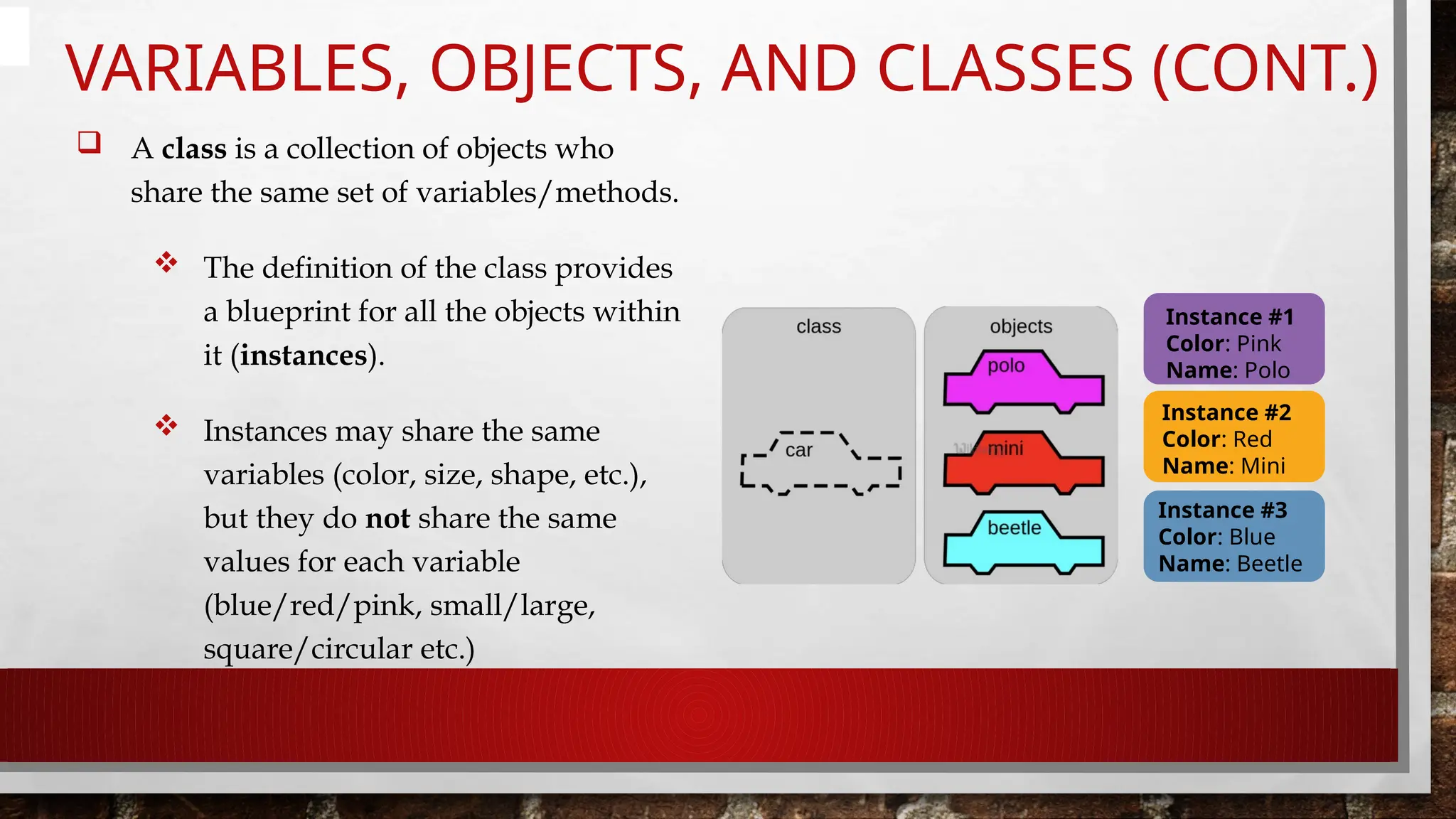
![BASIC SYNTAX RULES The name of your variable (myint etc.) is placed on the left of the “=“ operator. Most variable names are in camel case where the first word begins with a lowercase letter and any subsequent words are capitalized. Variable names may also appear in snake case where all words are lowercase, with underscores between words. The assignment operator (“=“) sets the variable name equal to the memory location where your value is found. The value of your variable (“hello, world”) is placed on the right of the “=“ operator. The type of this value does not need to be stated but its format must abide by a given object type (as shown). myString = “Hello, World” myInt = 7 myFloat = 7.0 myList = [7, 8, 9] myBoolean = true](https://image.slidesharecdn.com/pythonprogramming-241009182429-46d09911/75/Introduction-to-Python-Programming-language-5-2048.jpg)
